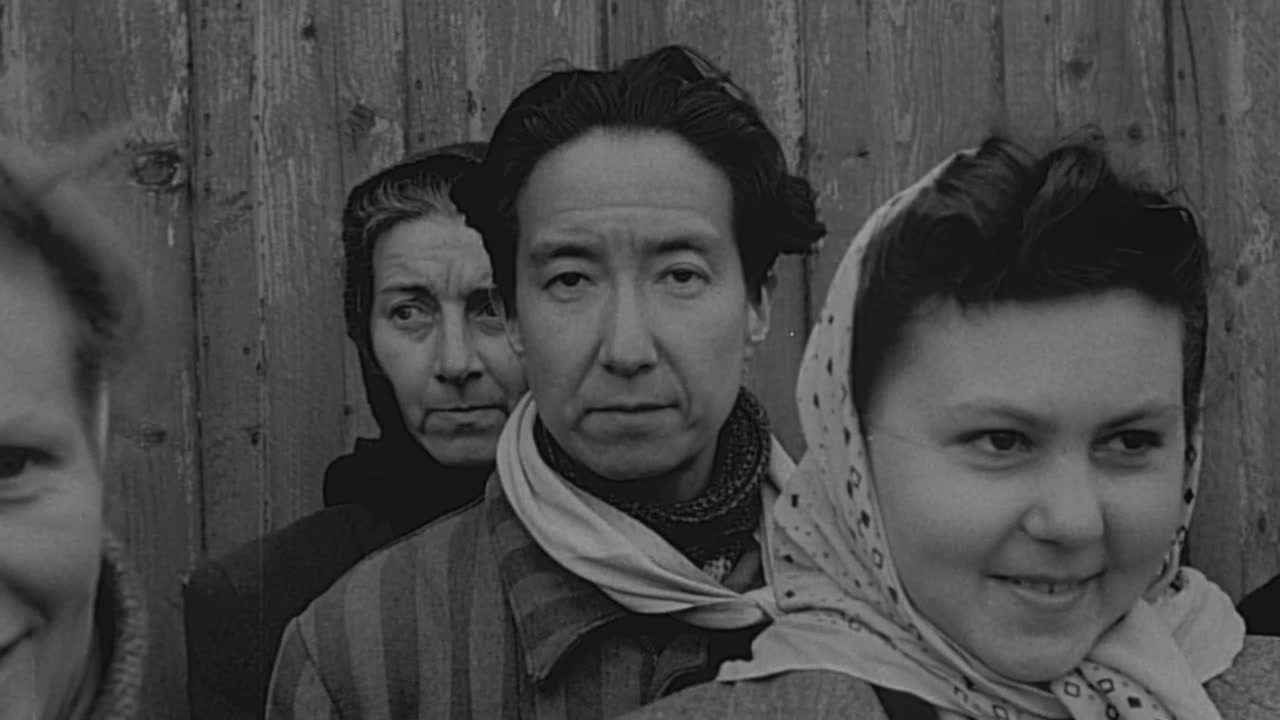On April 28, 1945, more than 10,000 refugees landed at a harbour in Malmö, Sweden. Remarkably, a Swedish National Television videographer captured their arrival on black-and-white film, and though the footage is just a few minutes long, it shows us everything we could ask for: close-ups, wide shots, frightened children, joyful mothers, smiles and waves. But on its own, the footage is an empty shell: personalities without histories, faces without names.
That’s where Swedish director Magnus Gertten comes in. Every Face Has a Name (which closed the Toronto Jewish Film Festival on May 15 at the Bloor Hot Docs Cinema), updates this 60-year-old footage by finding as many survivors as possible who arrived that day, showing them the restored footage on a silver MacBook, and asking them what – or whom – they remember.
There’s a wonderful moment of suspense with every one. The camera lingers unflinchingly on them, their backs hunched over, eyes squinted behind bifocals, muttering to themselves as they scan the footage warily.
Then, suddenly: “That’s my mother!”
READ: DAUGHTER SPOTS HER TEENAGED SURVIVOR MOTHER IN YOUTUBE VIDEO
Each face, as the title claims, has a name – but also a story. We meet the sweet-voiced Elsie Ragusin, an American Roman Catholic who visited her grandmother in Italy at the worst possible time and was transported to Auschwitz because the Nazis were convinced she was a spy; Philip Jackson, who helped his hardened mother in the resistance as a teenager and was decorated by the French military, only to suffer a worse fate when his own 19-year-old son died of leukemia years later; Nurit Stern, with a thick Israeli accent, who at first staunchly refuses to even look at the footage, yet winds up putting names to three unknown faces – including her own.
The film is a slow burn, with an eerie ambient soundtrack that lulls us somewhere between sleep and empathy. The cinematography and editing are cleverly done, considering what little there is to work with: they take associative cues from the subjects’ words to help us understand that everyday sights may remind these survivors of terrible things.
One man mentions seeing children hanging dead from coat hooks, so we cut to a rope swing near his house; another talks about feeling weak all the time, and we immediately see a soccer goalie standing haplessly after being scored on.
Though the film essentially does the same thing nearly a dozen times, its grander cinematic narrative is tugged along by repeated shots of a modern-day Sicilian harbour. Though the details are not made explicit for a while, it’s quickly obvious that Gertten wants us to be thinking about Syrian and African refugees – the thousands who have died while journeying to a better life, and the hypocrisy Europeans and North Americans flaunt whenever they reject the humanity of a certain class or race.
To be clear, I’m inferring a bit here. Gertten stops considerably short of making any sort of claim linking Jewish and Syrian refugees. Instead, he shows us the clips from Sicily, names a few Muslim refugees and ends things there.
READ: GREAT ESCAPE FROM NAZI CAMP SUBJECT OF NEW DOC
With a running time of only 75 minutes, he certainly had room to flesh out a real argument; he could have interviewed at least one African refugee, perhaps finding some firmer narrative parallel than simply juxtaposing poor people on boats. If he didn’t want to make a political film, he should have eschewed the topic altogether, instead of meekly hinting at social justice.
But if the modern-day parallel seems more an afterthought, the depth of the survivors’ experiences more than compensates as an emotional core. Had he not made this film, we could have looked at that original 60-year-old footage and parsed out something of a story on our own, filling in gaps with our imaginations and other documentaries. But Gertten has brought this mere archival documentary footage to life, so that, 50 years from now, once Nurit Stern and Philip Jackson are gone, their sum existence will not be reduced to nameless faces smiling, waving, staring straight into a camera. They will have told their stories.
